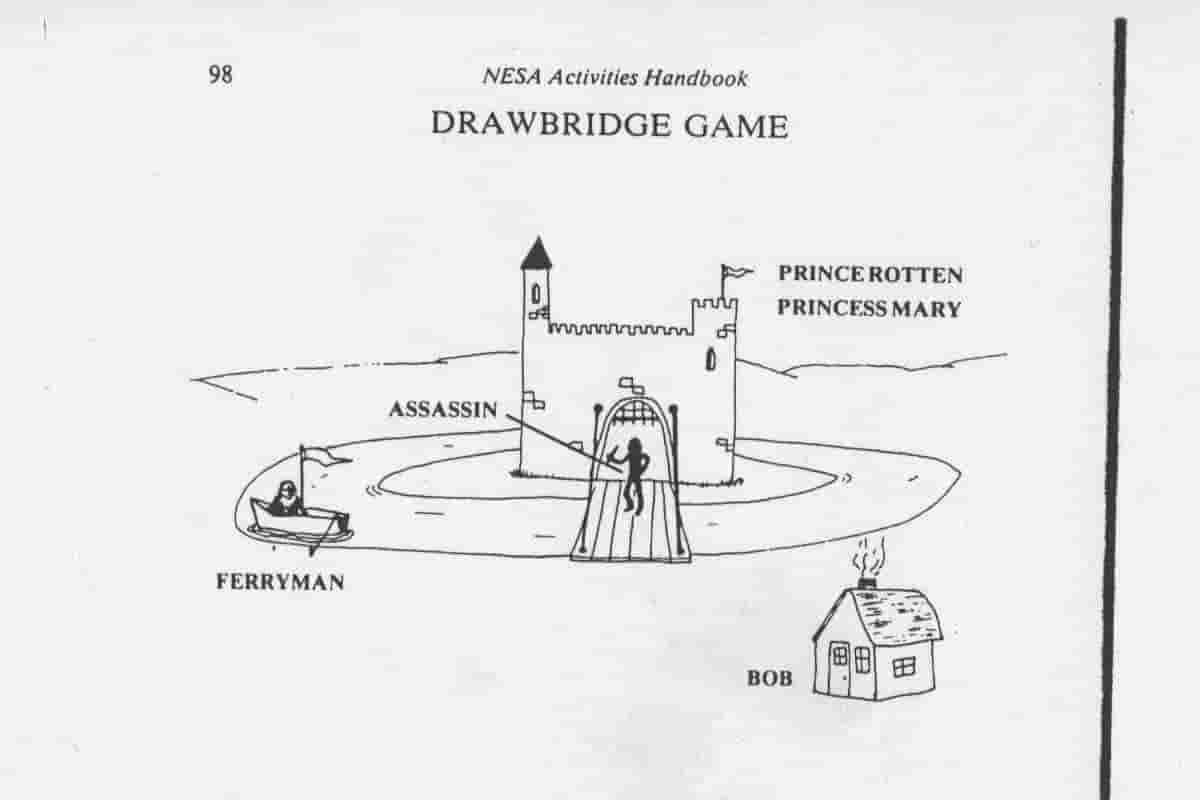
We did the original version of this exercise with our students at one of the international schools I taught as an international science teacher. I have wanted to adapt it to the Nepali context and finally I just did.
Here’s the story adapted for the Nepalis from the Drawbridge Game.
* * * * * * * *
Durga Devi Chettri and Rawan Adhikari, the son of the Chief Minister of the Province, lived in a big house next to a river. Rawan treats her terrible: he is insanely jealous, beats her if she looks sideways at another man, slaps her around when he gets angry or when she goes out without telling him or when she argues with him or when he gets home drunk, shows her no love or support.
One day, Rawan has to go to the capital city for a visit. “I’ll be gone for one night,” he tells her menacingly. “If I get back and you are not here, I’ll kill you.”
After he takes off, Durga breaks down and sobs at the misery and loneliness of her life following her arranged marriage to Rawan. Finally, unable to bear it, she sneaks across the suspension bridge to be with her lover, Sajjan Biswakarma, the blacksmith, a Dalit. She intended to get back that night but she falls asleep in Sajjan’s bed and wakes up just before daybreak.
Remembering her husband’s words, Durga rushes to the bridge. But there, waiting on the other end, is an assassin with a drawn knife. Frantic, she runs to the ferry below, the only other way across the river. Durga begs the ferryman for a ride.
“Sure,” he says, unmoved, “If you’ve got the fare.” She has no money, but begs him again, explaining the situation.
“Tough,” snarls the ferryman. “No money, no ride.”
Fearing for her life, she returns to Sajjan Biswakarma and asks him for help. He looks at her coldly. “Our relationship is only a romantic one,” he says. “I will not help.”
Terrified now, she runs to the nearby home of a friend. After explaining her desperate situation, Durga begs the friend for enough money to pay the ferryman his fee. “You got yourself into this mess. If you had not disobeyed your husband this would not have happened,” the friend said. “I will give you no money.”
Realizing her only chance is to get by the assassin, Durga tries to dash across the bridge while the assassin is distracted. At the last moment, he sees her, grabs her and cuts her throat. She dies on the bridge.
* * * * * * * *
If you are so inclined, you could provide your opinion via a Google form. If you are an adult (20 and over) click here. If you are younger (below 20) click here. The form asks you for some personal details and at the end to rank the characters in order of responsibility for her death.
For a Nepali version of the story as well as the forms, click here.
Update June 14, 2020
What I am going to state is obvious but because of comments I have received, I am stating it. There is nothing more or less to the story than is presented. To reiterate, DO NOT assume anything more or less about the characters or the story — like the assassin must have been hired by the husband or Durga does not actually die — than that which is presented here.
* * * * * * * *
If want to do this with a group, here are the details as set out by Katz. (I am reproducing parts of it verbatim because I liked them.)
Objective
To explore how the realities of power, authority, and societal values influence our perceptions about how we see the world.
Instructions
- Divide participants into groups (6 or more).
- Provide the story as a handout to each participant.
- Read the drawbridge story aloud or instruct each participant to read it themselves.
- Direct each participant to rank the characters from most responsible to least responsible for Durga’s death.
- Instruct each group to rank collectively the order of responsibility for Durga’s death.
- Ask each group to select a spokesperson.
- Have each group spokesperson explain the group’s rationale for the rankings and to record their rankings on a chalk/white board to compare.
- Facilitate a class discussion.
Facilitation Questions
- What factors influenced your ranking decision?
- What feelings were provoked during this activity and your decision-making process? Why?
- In attempting to reach a group consensus, were you convinced of a different ranking order? Why or why not?
- How does this exercise relate to (our Nepali) societal values and norms?
References
Katz, Judith H. (1978). The Drawbridge Exercise.
Seattle Government. The “Drawbridge” Exercise – Facilitator Notes. Not referenced in the blog but could be useful.
